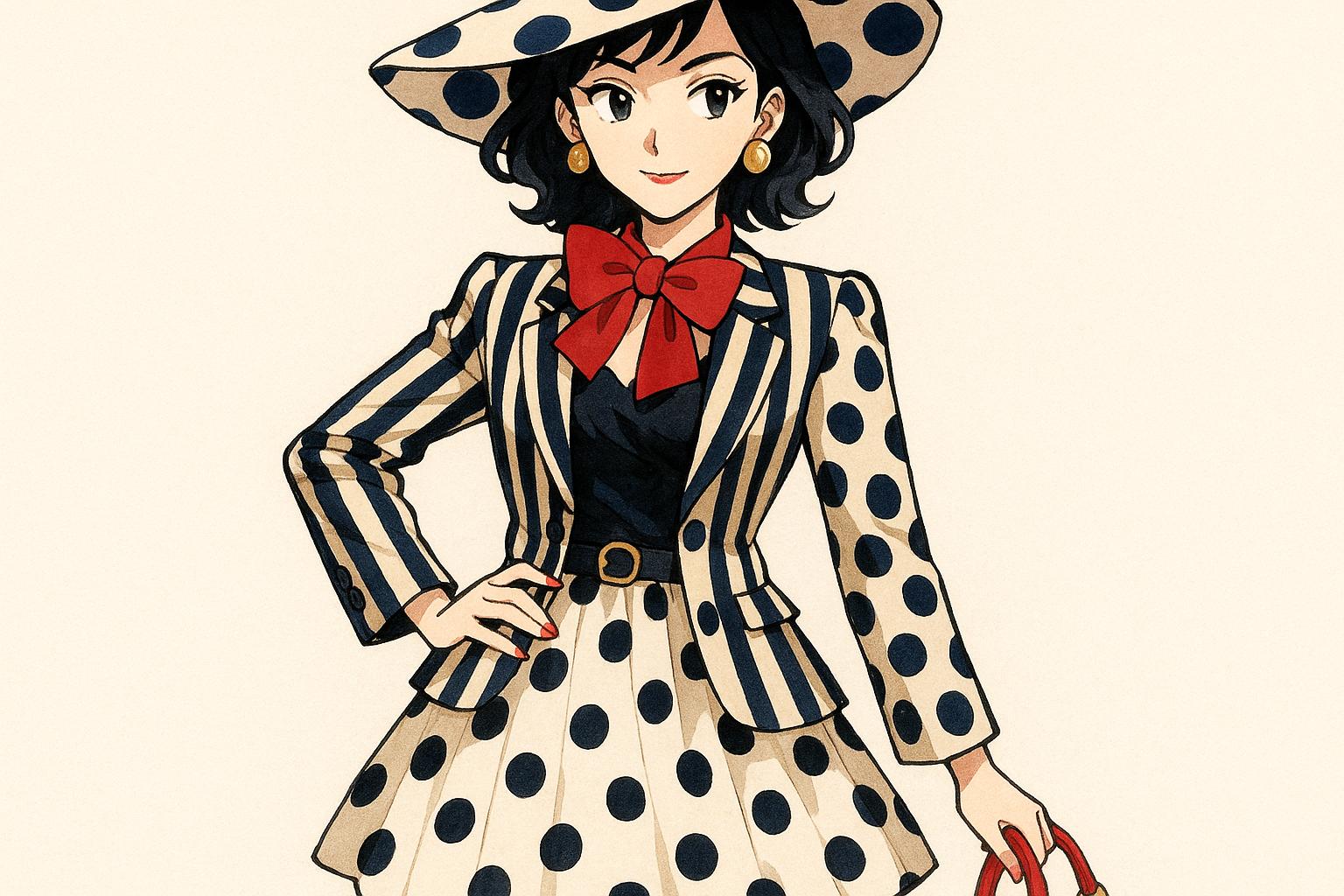Are you team spot, or team stripe? This playful sartorial debate reflects not just the aesthetics of fashion, but broader cultural associations and personal identity. Stripes and spots resonate differently, offering unique flavours that appeal in distinct ways. While stripes embody a brisk, robust aesthetic often associated with daywear—think of the nautical charm of Breton tops—spots evoke a sense of whimsy and ethereality, ideal for evening wear.
Historically, the appeal of these patterns has been intertwined with gender perceptions. Stripes are worn universally, while spots find a more prominent place in women's fashion. This division, while somewhat outdated, may influence how individuals approach these designs. Stripes, seen as functional and strong, dominate casual and business wear, fitting seamlessly into professional environments. Conversely, spots tend to blossom after dark, featuring prominently on dresses and accessories for evening outings.
Interestingly, both patterns draw much of their allure from a shared visual language that is rooted in familiarity. They echo the natural world: stripes can remind us of a zebra's imposing beauty, while spots may evoke the delicate patterns of a ladybird on a leaf. As iconic as the patterns may be, they also possess the potential for sophistication; a well-executed stripe can elevate a room’s decor, just as a polka dot painting by artists like Yayoi Kusama can command attention in a gallery.
Modern fashion celebrates this duality, encouraging individuals to embrace both patterns without the need for a definitive choice. Combining stripes and spots in a single outfit has become not only acceptable but fashionable. The trick lies in the execution; rather than splitting oneself between the two, it is often more harmonious to let one pattern take the lead while the other provides subtle support. For instance, pairing an oversized spotted dress with simple striped sandals can create an intentional yet effortless look.
When it comes to styling stripes, insights into body shape are invaluable. For pear-shaped figures, pairing horizontal stripes with darker tones can enhance the silhouette by drawing the eye upwards. Meanwhile, vertical stripes are recommended for those seeking an elongating effect. Different widths also play a role; smaller stripes tend to flatter curves better than wider alternatives. These nuances can shift how individuals approach stripes in their wardrobe.
As we revisit spots, embracing their modern potential is key to avoiding outdated connotations. Resisting the urge to default to classic combos reminiscent of school days can breathe new life into them. Integrating spots with more contemporary pieces—like flat shoes or oversized silhouettes—can shift perceptions, marrying nostalgia with modernity. Retailers like Marks & Spencer are leaning into this trend, offering designs that balance classic elements with fresh styling choices.
Further creativity can unfold through the mixing of patterns. The guidelines suggest balancing proportions and using solid colours as anchors to avoid a clashing aesthetic. For example, a skirt featuring small spots can be paired effectively with a striped top, provided one of the patterns remains muted. This approach prevents outfits from becoming overly busy and helps fashion enthusiasts navigate their styling choices confidently.
In conclusion, embracing both spots and stripes offers a unique opportunity to express personal style while playing with visual narratives crucial to fashion’s progression. No longer confined to simple dichotomies, they prompt reflection on how we use patterns to convey personality, mood, and intention. The beauty of today’s fashion landscape lies in its versatility; wear your stripes one day and your spots the next—or mix them both for a statement that is uniquely you.
Reference Map
- Paragraphs 1, 2, 3, 4, 5, 6, 7, 8, 9: [1], [2]
- Paragraph 4, 5, 6: [3], [4], [5]
- Paragraph 5, 6, 7: [6], [7]
Source: Noah Wire Services
